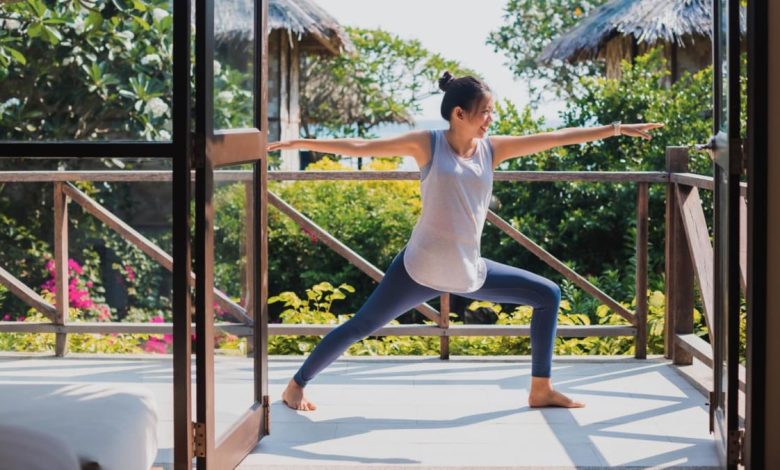Easy ways to squeeze in exercise while on vacation (if you really must)

The next time you’re trying to fit in a workout on a trip, it might be comforting to know that even fitness experts don’t necessarily recommend a “no excuses” attitude.
Cedric Bryant, the president and chief executive of the American Council on Exercise, said you should prioritise balance and your well-being when deciding whether – or how much – to exercise on vacation. “The key is to be smart enough to listen to your body and your mind, and do what feels right for you,” he said.
Still, making a little time to move has clear benefits: Physical activity helps reduce stress and lower cortisol, which can enhance how relaxed you feel, Dr Bryant said. Plus, staying active can help regulate your sleep, which could make it easier for you to adjust to a new time zone.
Here are a few ideas from fitness trainers and coaches for how to approach your exercise routine while traveling.
USE EXERCISE TO EXPLORE THE AREA
Most people walk a lot more on vacation than at home without realising it, said D’Annette Stephens, a personal trainer and the fitness programmes coordinator at Grand Canyon University in Phoenix. Walking, running and biking are all excellent ways to experience a new place – and get some cardiovascular exercise while you’re at it. Walking just 4,000 steps per day can reduce the risk of dying from any cause, according to one study from last year.
A hotel, resort or studio in another city can be a good place to try a new fitness class, said Jamie Carbaugh, a weight-inclusive online personal trainer: “It’s a great chance to explore something outside your comfort zone without the worry that your co-worker might show up right next to you,” she said.
If you’re visiting somewhere with outdoor recreation access, activities like hiking or kayaking can also be great options. Paul Valukas, a strength and conditioning coach in Madison, Wisconsin, likes to mountain bike on trips to Colorado with his wife. That way, they can get outside while challenging themselves physically.
“I’m not going to go sit in a squat rack in Crested Butte,” he said.
PACK LIGHT EQUIPMENT – IF YOU’LL USE IT
Resistance bands are easy to pack and can be used for a variety of strength training exercises, Dr Bryant said. A looped band can go just above your knees for hip strengthening exercises like clamshells and monster walks, and you can use a longer band with handles for overhead presses and rows, Stephens said. Resistance training can improve both muscle strength and cardiovascular health.
Then again, if you can’t realistically see yourself doing a banded workout in your hotel room or on the beach, don’t bother packing them, Valukas said. Bring what you’ll actually use.
In case you need extra motivation: Strength training can help reduce the aches and pains of travel, Stephens said, whether from walking, sitting on aeroplanesor sleeping on hotel mattresses.
EMBRACE BITE-SIZE ROUTINES
If sightseeing or that juicy airport paperback is demanding most of your time, don’t stress about finding the hours for a long, involved workout. Focus on what you can get done in a few minutes – ideally in the morning, before the fun of the day pulls you away, Carbaugh said. Numerous studies suggest that even short bursts of exercise offer real health benefits.
A short walk or dynamic stretching can help you warm up quickly. Then, try a few sets of simple body weight exercises. Carbaugh suggested 10 to 15 reps of things like squats with heel raises, push-ups with hands on a park bench (or sturdy table) and a dynamic stretch like downward dog with alternating bent knees. Cool down with some chest openers and lower-body stretches.
For something higher intensity that you can easily do in a hotel room, Valukas said to consider an AMRAP workout, short for “as many rounds as possible.” Set a timer for 15 or 20 minutes and cycle through four reverse lunges on each leg and six dead bugs on each side as many times as you can before the timer goes off.
FOCUS ON RECOVERY AND SUPPLEMENTAL WORK
If you often think about stretching or mobility work but never actually make time to do it, vacation can be a great opportunity to practise – especially if you can pack a small massage ball or borrow a foam roller, Stephens said.
The same applies to lower-intensity – but still challenging – workouts like Pilates and yoga, or even just squeezing in some core exercises. These are the things people tend to skip at home, Ms. Stephens said, but they’re a great way to keep your body feeling good.
OR… GIVE YOURSELF PERMISSION TO REST
Rest and recovery are an important part of a well-rounded exercise regimen, Valukas said. “We don’t get stronger when we’re lifting; we get stronger while we’re recovering,” he said. “Even athletes have breaks built into their year.”
If you’re anxious about losing the fitness progress you’ve made by taking time off, don’t be, Dr Bryant said. While the effects of a rest from exercise varies based on your age, activity level and overall health, research suggests that it takes longer than a week or two off to see a significant impact on cardiovascular health and muscle strength. “For a lot of people, that time off can be just what the body needed,” Dr Bryant said.
By Anna Maltby © The New York Times Company
The article originally appeared in The New York Times.

